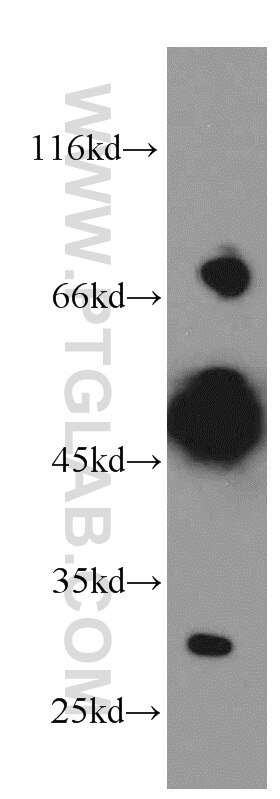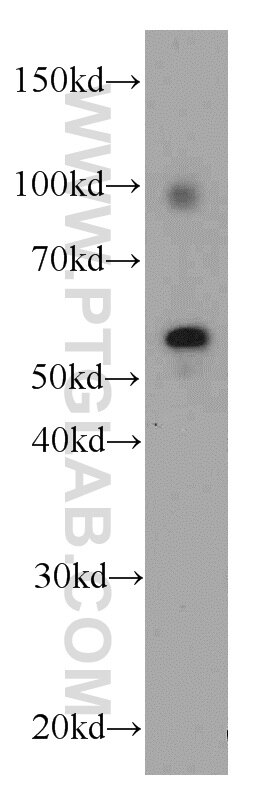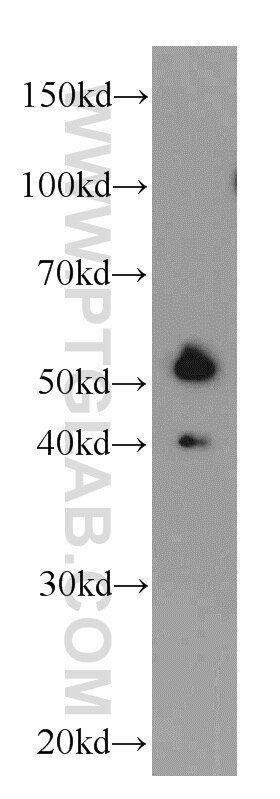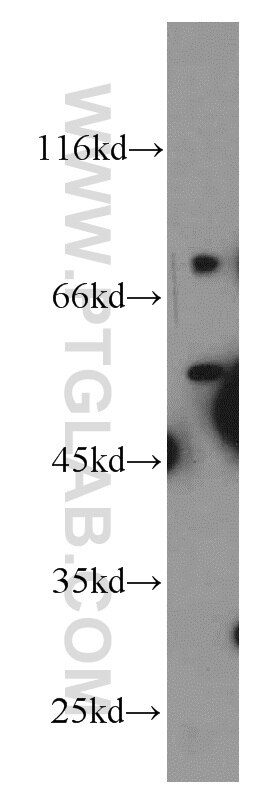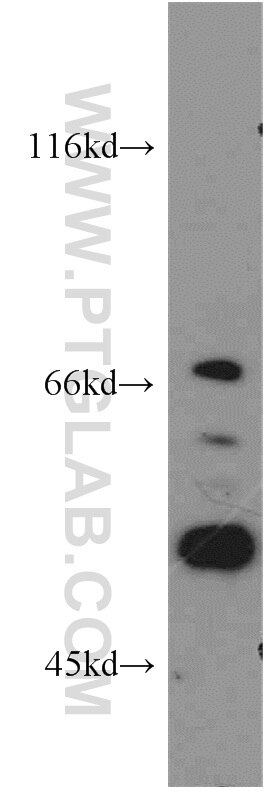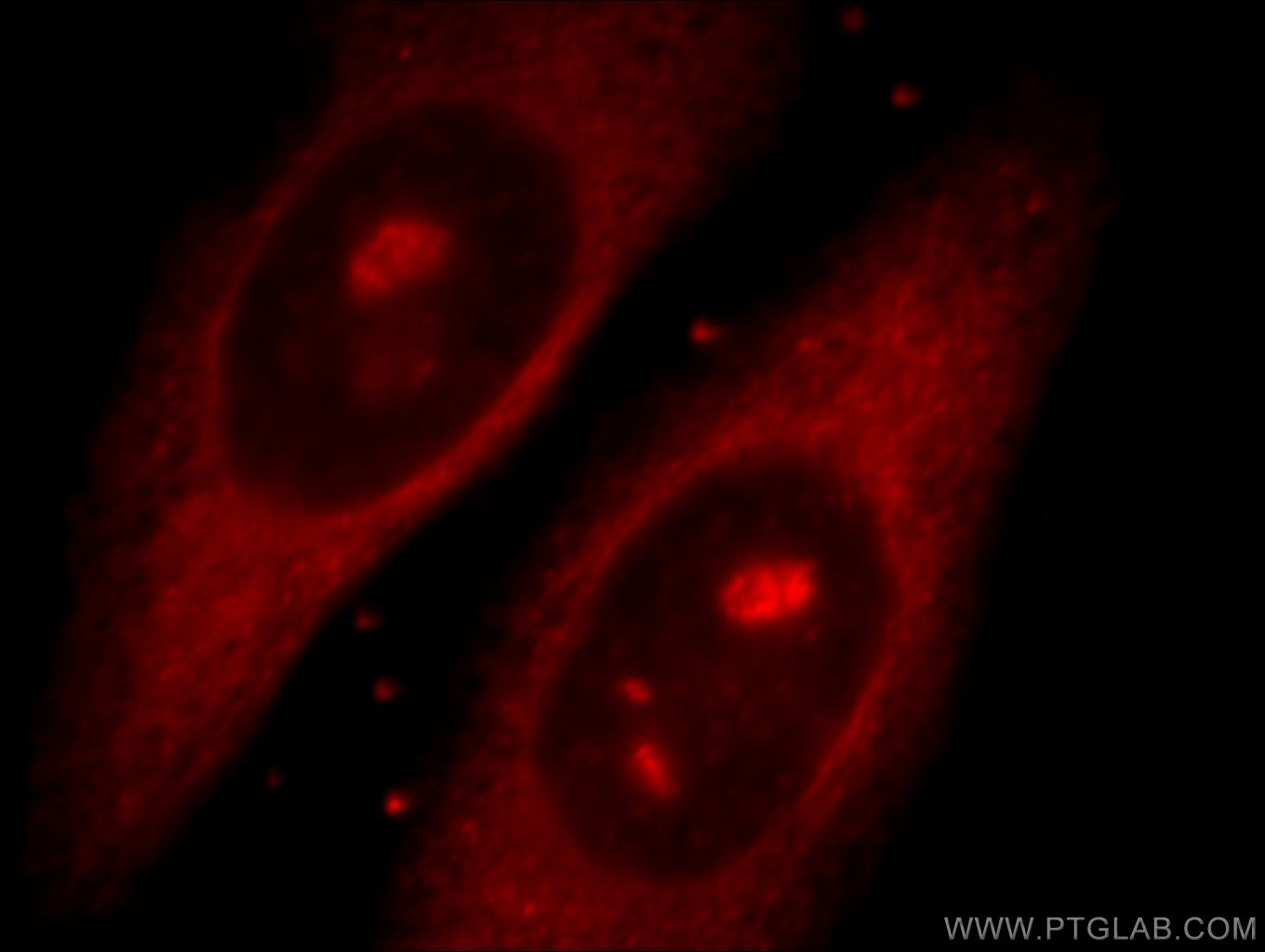REPS2 Polyclonal antibody
REPS2 Polyclonal Antibody for IF, WB, ELISA
Host / Isotype
Rabbit / IgG
Reactivity
human, mouse
Applications
WB, IF, ELISA
Conjugate
Unconjugated
Cat no : 20699-1-AP
Synonyms
Validation Data Gallery
Tested Applications
| Positive WB detected in | mouse brain tissue, human testis tissue, LNCaP cells, mouse kidney tissue |
| Positive IF detected in | HepG2 cells |
Recommended dilution
| Application | Dilution |
|---|---|
| Western Blot (WB) | WB : 1:500-1:2000 |
| Immunofluorescence (IF) | IF : 1:10-1:100 |
| It is recommended that this reagent should be titrated in each testing system to obtain optimal results. | |
| Sample-dependent, Check data in validation data gallery. | |
Published Applications
| IF | See 1 publications below |
Product Information
20699-1-AP targets REPS2 in WB, IF, ELISA applications and shows reactivity with human, mouse samples.
| Tested Reactivity | human, mouse |
| Cited Reactivity | human |
| Host / Isotype | Rabbit / IgG |
| Class | Polyclonal |
| Type | Antibody |
| Immunogen | Peptide |
| Full Name | RALBP1 associated Eps domain containing 2 |
| Calculated Molecular Weight | 72 kDa |
| Observed Molecular Weight | 72 kDa, 55 kDa, 30 kDa |
| GenBank Accession Number | NM_004726 |
| Gene Symbol | REPS2 |
| Gene ID (NCBI) | 9185 |
| RRID | AB_10697669 |
| Conjugate | Unconjugated |
| Form | Liquid |
| Purification Method | Antigen affinity purification |
| Storage Buffer | PBS with 0.02% sodium azide and 50% glycerol pH 7.3. |
| Storage Conditions | Store at -20°C. Stable for one year after shipment. Aliquoting is unnecessary for -20oC storage. 20ul sizes contain 0.1% BSA. |
Background Information
REPS2, also named as POB1, is involved in growth factor signaling through its influence on the Ral signaling pathway. The antibody is specific to REPS2.
Protocols
| Product Specific Protocols | |
|---|---|
| WB protocol for REPS2 antibody 20699-1-AP | Download protocol |
| IF protocol for REPS2 antibody 20699-1-AP | Download protocol |
| Standard Protocols | |
|---|---|
| Click here to view our Standard Protocols |
Publications
| Species | Application | Title |
|---|---|---|
Cell Signal REPS2 downregulation facilitates FGF-induced adhesion and migration in human lens epithelial cells through FAK/Cdc42 signaling and contributes to posterior capsule opacification. |
